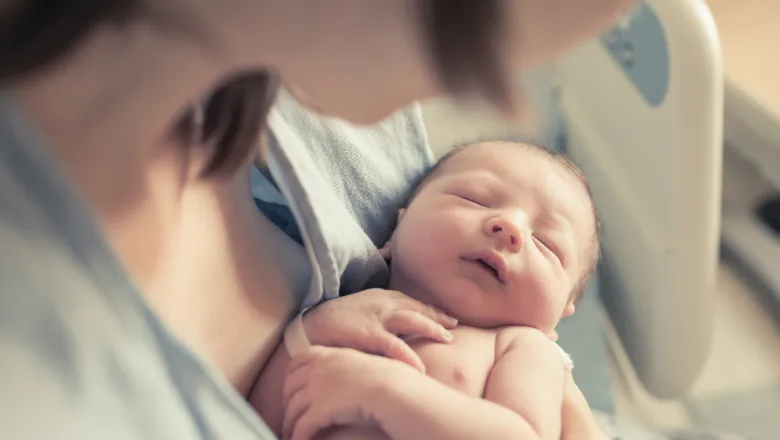“We saw too early cord clamping in most televised births, but no programme informed viewers about the safety aspects. When showing outdated practices, broadcasters have a public health duty to inform viewers that this immediate medical intervention is no longer recommended. No broadcaster would show the sleeping positions associated with cot-death without comment.”
Professor Susan Bewley, Professor Emeritus of Obstetrics and Women's Health at King’s College London
19 October 2023
TV shows depicting inaccurate childbirths need safety warnings
UK television programmes showing inaccurate birthing practices should require safety recommendations for viewers to avoid misinterpretations by the public.

The study by researchers from King’s College London and the University of Liverpool, analysed 87 births shown in 48 episodes of three UK popular fictional and reality TV programmes (BBC’s Call The Midwife, This Is Going To Hurt and Channel 4’s One Born Every Minute), to see how they compare to modern guidelines by the National Institute for Health and Care Excellence (NICE).
The study, published today in JRSM Open, found that the TV programmes largely showed modern updates to labour care. However, depictions of midwives and doctors clamping the umbilical cord were shown inaccurately or dramatised as unimportant a third of the time, with no safety information for viewers about what they were being shown. Researchers explore the problematic nature of this depiction, explaining harmful traditional medical practices that can cause death and brain injuries in premature babies are being presented as standard practice in modern TV programmes. Without a safety warning to inform viewers otherwise, the general public and healthcare professionals will think the clamping practices they see are correct, which could misinform prospective parents and professionals who deal with the newborn baby.
Clamping in childbirth is where the umbilical cord between the mother and child is clamped before being tied and cut. The placenta (afterbirth) can still be in the uterus (womb) and functioning. The procedure should not happen before a one-to-five-minute window after birth as it stops blood circulating between mother and child during the time the baby begins to breathe. If the cord is clamped too soon, then there is a risk of depriving the baby of blood that goes into the lung circulation.
The researchers found that cord clamping was rarely shown on TV and it was given less attention on screen than the baby’s first cry or cutting of the cord, increasingly a ritual performed by the father in the modern day. In only four of the 25 instances where clamping was depicted, did it happen after one minute. In 21 instances (84%) clamping appeared to happen immediately or too early, which is not in line with present NICE guidelines. Whilst early clamping was routine in the past, and it is not essential that cord clamping is featured in televised births, when it is shown inaccurately viewers might be convinced they are seeing correct birthing practice.
“Millions of viewers watch programmes like Call the Midwife every week to be entertained but the line between fact and fiction is blurred. We are impressed that UK television shows have accurately depicted some changes in childbirth over the last century, but on the other hand they have also provided the public with a picture of poor-quality care when it comes to clamping during childbirth. These inaccurate depictions could influence how people see real-world care.
Professor Andrew Weeks, a Professor of International Maternal Health at the University of Liverpool, added:
“Health professionals know that midwives and doctors should not interrupt the flow of blood to the newborn baby nor separate the mother and baby without a pressing reason, and yet this is what is being shown on popular television programmes as common practice.
“Incorrect depictions like this, however routine, can lead to misinterpretations of correct practice by the public. The language used in programming of 'delayed' or 'deferred' clamping can make people think it should be done 'early' or 'immediately' when that is not correct. This illustrates the need for safety recommendations when TV dramas show birthing practices and procedures that are outdated and inaccurate.”
